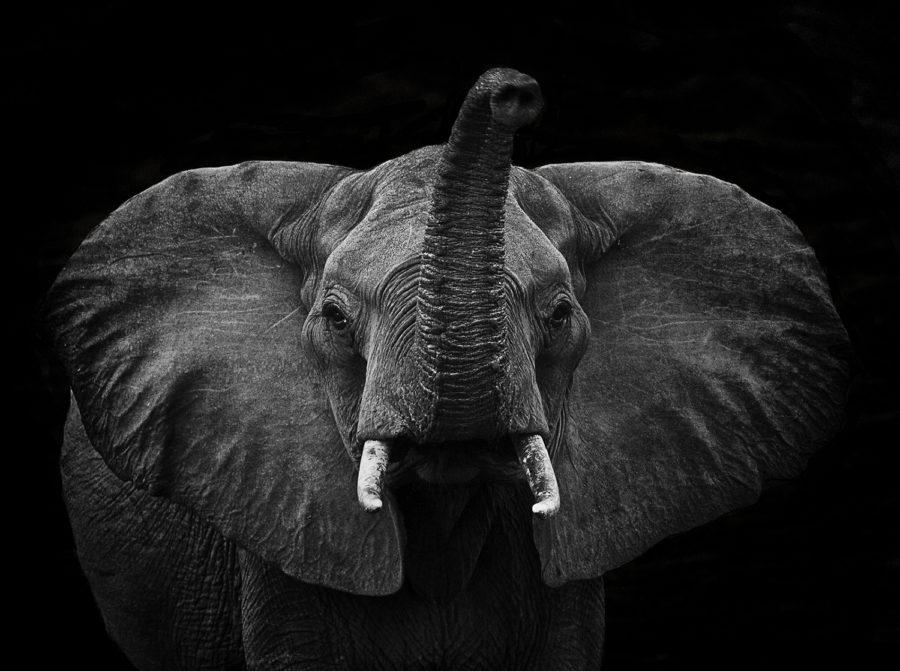Woodruff: An elephant never forgets
Elephant
December 10, 2015
The San Antonio zoo has been making recent headlines, but in all the wrong ways. The Animal Legal Defense Fund (ALDF) has filed a law suit against the family attraction for its maltreatment of an Asian elephant named Lucky. The suit states that the zoo infringes on the Endangered Species Act, by harming Lucky physically and psychologically.
Lucky the elephant’s story starts with her birth in Thailand. She was captured before the age of 1, and brought to the San Antonio zoo at the age of 2 in 1962. She then lived out her life in captivity, only having other companions every few years. Now, in 2015, Lucky is 55 and showing clear signs of psychological problems and high stress.
After hearing about Lucky’s dire situation, the Tennessee Elephant Sanctuary offered to take Lucky for free so she could have adequate living conditions and the ability to be social with other elephants. Unfortunately, San Antonio Zoo director Steve McCusker refused this offer, choosing to leave Lucky in concrete bound solitude.
One of the zoo’s many rebuttals to the activists attempting to free Lucky was that the San Antonio Zoo is an accredited attraction, according to the Association of Zoos and Aquariums (AZA), so it must have adequate living conditions for the elephant.
However, the AZA has concluded that elephants, being social creatures, cannot live in solitary confinement and all captive female elephants must have two other companions. Unfortunately, this rule doesn’t go into effect until 2016, according to the local paper, My San Antonio, making Lucky’s current situation still unacceptable.
Lucky is exhibiting signs of stress and depression from her lonely enclosure. The letter from the ALDF reports Lucky often sways, head bobs and paces throughout her enclosure.
G.A. Bradshaw, faculty member of the psychology program at Pacifica Graduate Institute in California, and Lorin Lindner, clinical psychologist, released a study on post-traumatic stress disorder and elephants.
The study discovered that just as humans can experience PTSD, so can elephants. It is quite plausible that Lucky is experiencing PTSD symptoms, as she was separated from her mother and family at an extremely young age. Some signs of distress in elephants include head bobbing, pacing and repeated trunk waving — symptoms very similar to Lucky’s.
A book, “Mind and Movement: Meeting the Interests of Elephants”, was released by Joyce Poole and Petter Granli. The book helps explain what qualifies as a “suitable” habitat for elephants in captivity. The healthy captivity requirements were based on the actions and habits of wild elephants.
Poole and Granli said that to meet the social, sexual and psychological needs of elephants, they need to be kept in “families” of 20-30 individuals. A herd of elephants this size would then require a 31-44 square mile habitat of varying terrains in order to meet an elephant’s foraging and exercise requirements.
The San Antonio Zoo unfortunately falls short of meeting any of these requirements. The zoo is home to 9,000 animals, all of which are forced to share the 35 acres of exhibit space, according to its website. Lucky, who is supposed to have at least 31 square miles and a family, is forced to live alone on a meager piece of the zoo land.
Lucky the elephant’s story is tragic, and unfortunately is not the only case of these social creatures being mistreated. While zoos can provide some fantastic opportunities and sanctuaries for some animals, not all creatures are being treated the way they should be.
Elephants are highly social and intelligent creatures that need versatile stimulation and interaction in environments that zoos simply cannot provide. It is time for Lucky, and other maltreated elephants, to be moved to sanctuaries, where they can enjoy their life and escape their companionless concrete prisons.

















